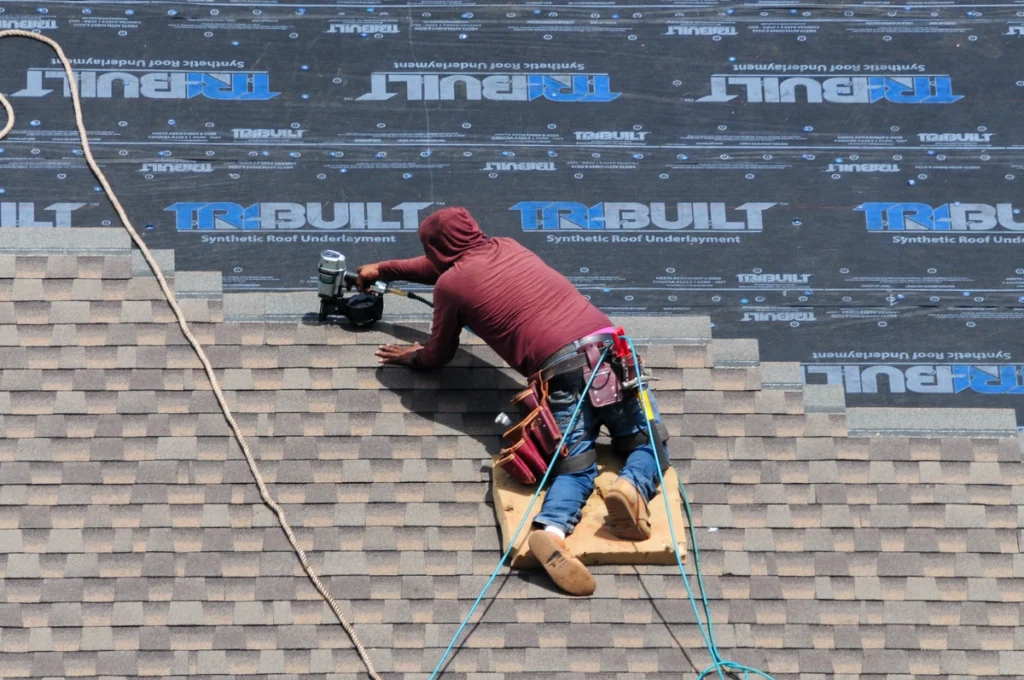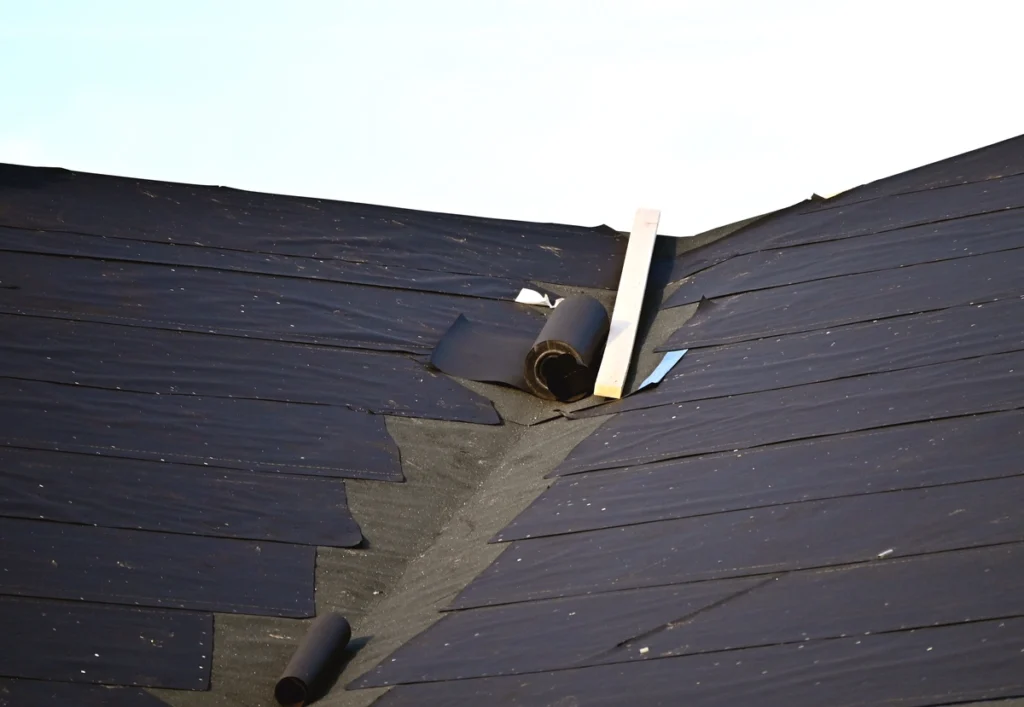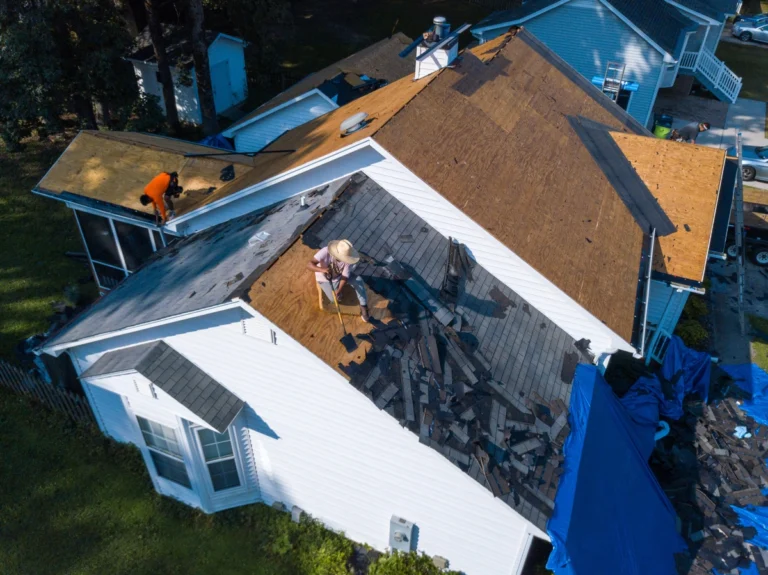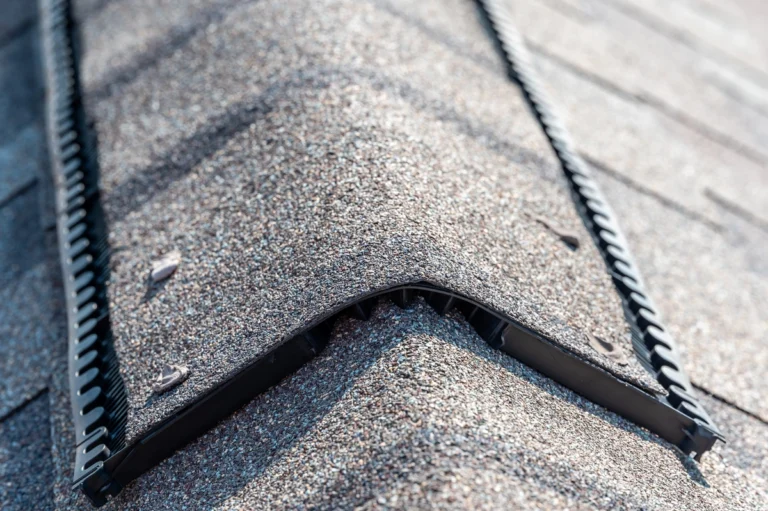We all reap the benefits of our roofs every day. Yet, many homeowners underestimate the importance of understanding the different parts of a roof and what they do. If that sounds like you, we are here to help!
Today, we’ll explore:
- Why it’s crucial for homeowners to understand their roofs
- The various parts of a roof and what they do
- Telltale signs of roof damage
- When it’s time to reach out to a professional roofing contractor
Why Homeowners Should Understand Their Roofs
You don’t have to be a professional roofer to understand the basics of your roof structure! Here are some reasons why it’s good to familiarize yourself:
- Protection and Upkeep: Think of your roof as the first defender against rain, snow, wind, and sun. Knowing its components helps you keep your home in top shape. Regular maintenance can prolong your roof’s life and save you from expensive repairs down the road.
- Saving Money: When you’re familiar with your roof’s makeup, you can make informed choices about repairs and replacements. This knowledge prevents unnecessary spending by spotting minor problems before they become major headaches.
- Safety First: Knowing your roof isn’t just about saving money—it’s also about staying safe. Understanding it helps you avoid accidents when checking or fixing minor issues. Plus, it ensures you can talk effectively with roofing experts when the need arises.
The 6 Different Parts of a Roof and What They Do

Your roof is made up of a variety of components and materials. Below, we’ve listed all the major parts you should be aware of:
1) Roof Decking
The roof deck is the foundation of your roof’s structure. It’s like the base of a cake. Usually made from plywood or OSB (that’s a kind of strong wood), it provides a solid surface for the other roof parts.
2) Underlayment
Think of underlayment as your roof’s extra shield against water. It’s like the raincoat you wear in a storm. Made of materials like felt paper or synthetic stuff, it keeps moisture away from the deck and helps it stay strong.
3) Roofing Materials
Roofing materials are what you see on the outside of your roof. They come in all sorts, like asphalt shingles, metal, clay or concrete tiles, and wood shingles. The material you choose affects how long your roof lasts, how it looks, and what it costs.
4) Flashing
Flashing is like your roof’s raincoat zipper, keeping water out where it might sneak in. Made of metal, it’s put in spots like valleys, chimneys, vents, and skylights to keep everything nice and dry.
5) Roof Ventilation
Proper airflow is a must for your roof to stay healthy and your home to stay comfy. It’s like making sure your cake doesn’t get too soggy. Roof vents, soffit vents, and ridge vents help air move properly, keeping your attic dry and safe.
6) Eaves and Fascia
Eaves are like your roof’s overhangs, sticking out over the sides of your home. Fascia is like a board running along the eaves. They protect the edges of your roof and make it look nice.
Common Signs of Roof Damage
Knowing your roof parts helps you spot problems. Here are some common warning signs:
- Missing or Damaged Shingles: Think of shingles like roof tiles. Missing or broken ones let water in, leading to leaks. Keep an eye out for any shingle trouble.
- Water Stains Inside: Water stains on your walls or ceilings are a big hint something’s wrong up top. They might mean a leak that needs fixing.
- Algae or Moss: Algae and moss on your roof can make things soggy and cause shingles to wear out faster. Deal with this issue to keep your roof healthy.
- Curling or Buckling Shingles: Shingles that curl, warp, or buckle aren’t doing their job anymore. Swap them out to keep your roof strong.
- Granule Loss: Shingles often have little grains on them. If you spot a bunch of these in your gutters or downspouts, it’s a sign your shingles are getting old.
- Flashing Problems: Loose or damaged flashing can let water in where it shouldn’t. Check it around chimneys, vents, and skylights.
- Roof Sagging: A sagging roof can be a sign of something seriously wrong. It might be a structural issue or lack of support. Get it looked at ASAP.
When to Call a Professional Roofing Contractor

While it’s great to be handy around the house, some roof problems are best left to the pros. Here’s when to call in a roofing contractor:
- Big Damage: If your roof got hit hard by a storm, a fallen tree, or something major, get a professional’s opinion. They can assess the damage and recommend repairs or replacements.
- Leaks: If you notice a roof leak or see water damage inside your home, don’t wait. Call a roofing contractor to pinpoint the problem and fix it.
- Aging Roof: Roofs don’t last forever. If yours is getting up there in years (usually 20-30 years for asphalt shingles), have it checked for issues or consider a replacement.
- DIY Fixes Gone Wrong: If you’ve tried to fix your roof yourself and it’s not working or you’re unsure, reach out to a pro. They’re trained and equipped to tackle roof issues.
- Safety Concerns: Roof work can be risky, especially if you’re not experienced or don’t have the right safety gear. Leave high-risk jobs to the professionals who know how to work safely up there.
Work With Sundance!
Understanding your roof’s anatomy and keeping an eye out for damage is a smart move for any homeowner. It’s a way to protect your investment, keep your family safe and comfortable, and possibly save money on costly repairs. Remember, when in doubt or when facing significant roof problems, reach out to a qualified roofing contractor. Taking care of your roof is like giving your home a sturdy umbrella—it ensures it’ll be cozy and dry for years to come.
Got a question? Sundance Kitchen, Baths, & Exteriors has the answer. Contact us today to learn more about our services!




